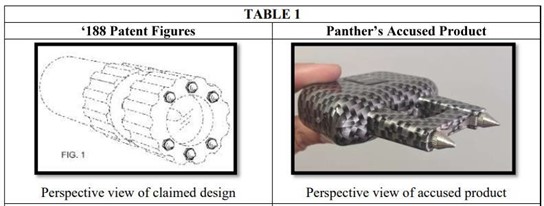The US Court of Appeals for the Federal Circuit found the patents at issue invalid based on the patent owner’s “quotation” letter to a third party, concluding it was a commercial offer for sale under pre-America Invents Act (AIA) 35 U.S.C. § 102(b) notwithstanding the patent owner’s reservation of a post-quote acceptance. Crown Packaging Technology, Inc. v. Belvac Production Machinery, Inc., Case Nos. 22-2299; -2300 (Fed. Cir. Dec. 10, 2024) (Dyk, Hughes, Cunningham, JJ.)
Crown Packaging Technology owns patents for necking machines, which reduce the top diameter of metal beverage cans. The earliest priority date for the patents was April 24, 2008, setting the critical date of April 24, 2007. On November 14, 2006, Crown sent Complete Packaging Machinery a letter quoting one of its necking machines that embodied the claims of its patents.
Crown sued Belvac Production Machinery for infringing Crown’s patents. Belvac raised an invalidity defense under § 102(b), contending that Crown’s pre-critical-date letter to Complete Packaging constituted a commercial offer for sale, which rendered the patents invalid. On summary judgment, Crown argued that its letter could not create a binding contract, was not a commercial offer for sale, and was not an offer for sale “in this country” as required by § 102(b). The district court agreed with Crown, finding that the letter was merely an invitation to make an offer, not an offer in itself. At trial, the jury found the patents valid but not infringed. Both parties appealed.
The Federal Circuit reversed the district court’s validity determination, finding that Crown’s letter was an invalidating offer for sale under § 102(b). The Court’s analysis involved five factors:
- Whether the subject of the offer embodied the claims of the patents.
- Whether the offer occurred “in this country.”
- Whether the offer predated the critical date.
- Whether the invention was the subject of a commercial offer for sale.
- Whether the invention was ready for patenting.
Crown conceded that the necking machine embodied the asserted patent claims, was ready for patenting, and that the letter predated the critical date. Thus, the dispute focused on whether the letter was a commercial offer for sale and whether it was made “in this country.”
The Federal Circuit determined that the letter was a commercial offer for sale. While labeled as a “quotation,” the letter included definite terms typically associated with a binding offer, such as pricing, delivery schedules, payment terms, warranties, and liability conditions. These terms established the mutual obligations of the parties. The Court found that the letter required immediate performance since Complete Packaging was obligated to pay 50% of the purchase price upfront and Crown committed to begin manufacturing upon receipt of payment. Also, despite an explicit clause requiring Crown’s written acceptance, the Court found that the letter was still a commercial offer for sale under established legal precedent.
The Federal Circuit also rejected Crown’s argument that the letter was not made “in this country.” Pre-AIA § 102(b) defines an offer made to a US company at its US [...]
Continue Reading
read more


 Subscribe
Subscribe



